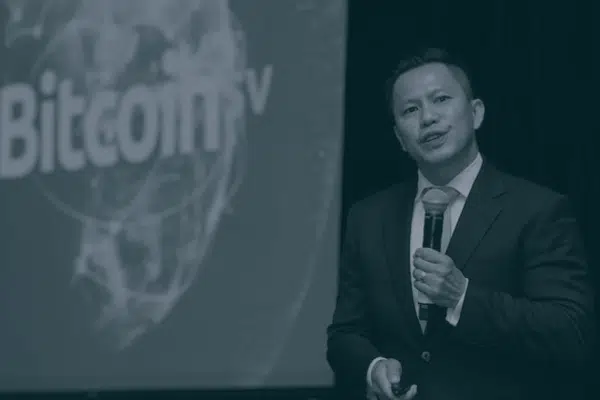Jimmy Nguyen, the Founding President of Bitcoin Association, makes predictions for 2021 and what it could hold for blockchain and digital currencies.
After years of hype about blockchain technology and its vast potential, 2021 will be the year that potential is finally put into practice. The real utility will be driven by applications that leverage the advantages of a blockchain and its public ledger, both for the data and micropayment transaction capabilities offered by any massively scaled chain.
We will also see improved user interfaces and experiences to make blockchain and digital currencies easier to use and more accessible than they presently are in today’s largely hobbyist landscape. As a result, blockchain applications will see higher uptake, particularly in data-heavy industry verticals that stand to benefit from empowering data with monetisation and transparency – think healthcare, gaming, digital marketing, supply chain, and Internet of Things to name a few.
The utility value of a blockchain and its tokens
Watching the values of cryptocurrencies rise and fall is often an interesting exercise, as most market valuations are currently based on little more than speculation about the future value of a coin. For many blockchains and their respective tokens – including BTC – this is all there is to go on, because there is no genuine utility being developed for business and consumer use. Despite this, the market cap for many tokens has grown into the billions of dollars.
As cryptocurrencies become increasingly coveted by serious institutional investors, hedge funds, and other sophisticated financial players, 2021 will be the year the real utility becomes a key factor in pricing analysis.
Better healthcare with better data
Blockchain solutions in the healthcare space will bring about massive improvements in two primary ways in 2021.
Firstly, blockchain applications will for the first time facilitate patients owning, managing, and even monetising their personal health data. Today’s healthcare information systems are incredibly fragmented, with patient data from different sources – be they physicians, pharmacies, labs, or otherwise – kept in different silos, eliminating the ability to generate a holistic view of patient information and restricting healthcare providers from producing the best health outcomes.
Healthcare organisations are growing increasingly aware of the ways in which blockchain technology can be used to eliminate data silos, enable real-time access to patient information, and return control to patients for the use of their personal data – all in a highly-secure digital environment. 2021 will be the year that patient data goes blockchain.
Secondly, blockchain solutions can ensure more honesty and transparency in the development of pharmaceutical products. Clinical research data is often subject to questions of integrity or ‘hygiene’ if data is not properly recorded, or worse, is deliberately fabricated. Blockchain technology enables easy, auditable tracking of datasets generated by clinical researchers, benefitting government agencies tasked with approving drugs, while producing better health outcomes for healthcare providers and patients. In 2021, I expect to see a rise in the use and uptake of applications that use public blockchain systems to incentivise greater honesty in clinical research.
Gaming and eSports
2021 will be the year that the metaverse – the long-discussed, but barely realised virtual world in which people can enjoy immersive digital experiences and easily transact in them – takes significant steps to become a reality, propelled by advancements in blockchain technology. This will have a significant impact on gaming. Blockchain technology will blend the physical world of smart cities with virtual experiences; facilitate the coupling of data with monetary value – enabling experiential reality and gaming interactions to be easily monetised with micropayments; improve transparency and fairness through the use of a public ledger; and create tokenised marketplaces for virtual items, establishing new digital economies where users can earn and spend within the metaverse.
User-generated content and digital marketing
Digital content creators and influencers will finally learn to leverage blockchain-based applications to directly earn revenue from their content and avoid de-platforming risks in 2021. Incumbent social media and online content platforms – Facebook, YouTube, Twitter Instagram, TikTok – earn almost all of the revenue generated from user content, while wielding unilateral power to terminate user accounts, curtail or even cease earning, as well as moderate or disable content.
New social networks underpinned by blockchain technology are shifting that paradigm, enabling content creators to directly and instantly earn micropayments for each engagement with posted content, while unlocking interoperability and restoring the balance of power to the users. These new business models will threaten the traditional advertising and data-mining business models of legacy platforms.
Social good with supply chain
In 2021, we will see greater penetration of blockchain technology as a means of addressing global supply chain issues in a manner that can produce positive social outcomes. By using a publicly verifiable data ledger, product traceability information can be coupled with real-time data about a product’s journey along the supply chain – be that from farm to consumer, factory to business, or otherwise. Blockchain-powered supply chain applications will help to prevent counterfeiting, improve the traceability of ecologically-conscious products, as well as increase trust in essential items like virus tests and vaccines, as part of a trend that will advance goals of product honesty, environmental sustainability, and positive public health outcomes
Internet of Things (IoT)
The proliferation of Internet of Things devices exploded in 2020 – a trend expected to increase exponentially in the coming years. With that rise in devices came a demonstration of the different capabilities these technologies offer, including increasingly common implementations that used publicly monitored data in smart city and environmental applications.
Because of the substantial number of IoT endpoints globally, the volumes of data generated by IoT devices are not just big data – they are extreme-scale datasets. That data has tremendous value, especially if it can be easily accessed, analysed, used, and monetised – all attributes that blockchain technology can deliver.
In 2021, we will see government entities, public utilities, transportation agencies, logistics companies, wireless carriers, even personal device manufacturers, harnessing blockchain technology as a better way to store, access, and monetise extreme scales of IoT data.
Notice: Information contained herein is not and should not be construed as an offer, solicitation, or recommendation to buy or sell securities. The information has been obtained from sources we believe to be reliable; however no guarantee is made or implied with respect to its accuracy, timeliness, or completeness. Authors may own the crypto currency they discuss. The information and content are subject to change without notice. Visionary Financial and its affiliates do not provide investment, tax, legal or accounting advice.
This material has been prepared for informational purposes only and is the opinion of the author, and is not intended to provide, and should not be relied on for, investment, tax, legal, accounting advice. You should consult your own investment, tax, legal and accounting advisors before engaging in any transaction. All content published by Visionary Financial is not an endorsement whatsoever. Visionary Financial was compensated to submit this press release. Please also visit our Privacy policy; disclaimer; and terms and conditions page for further information.

